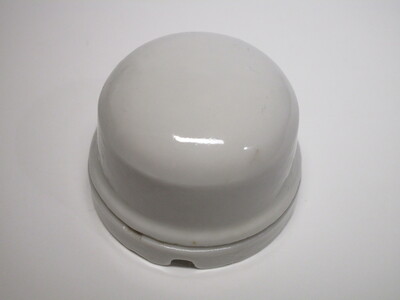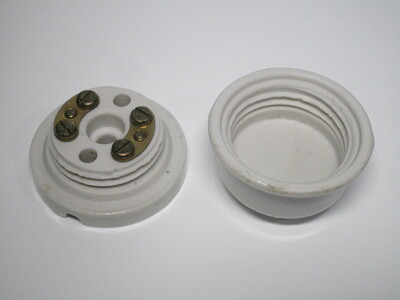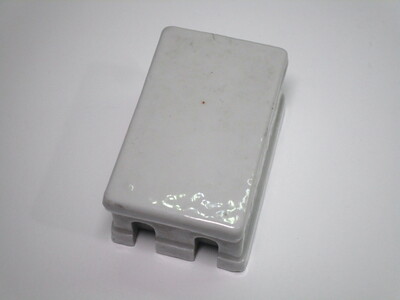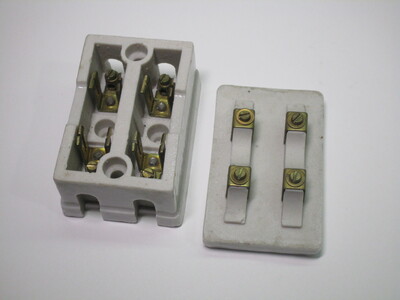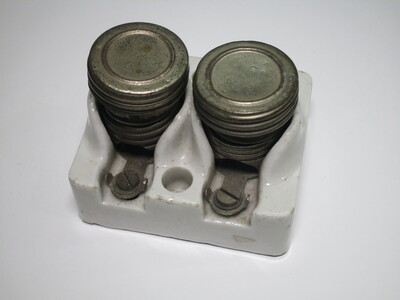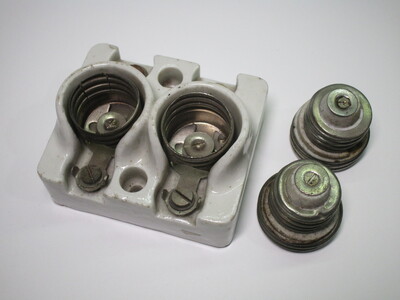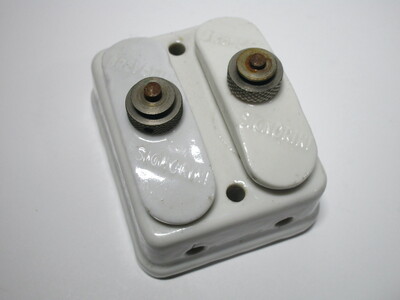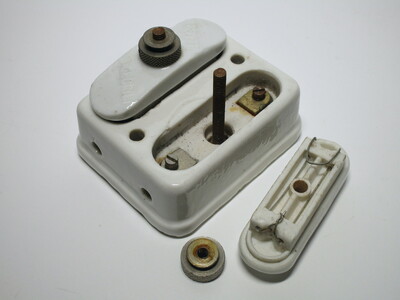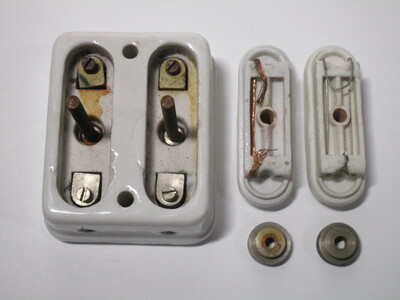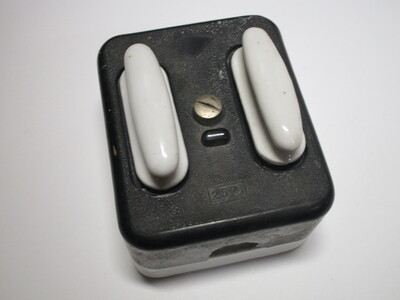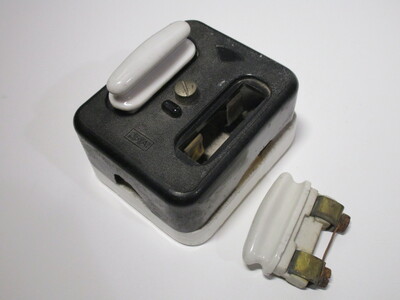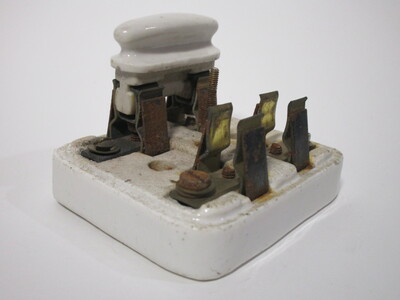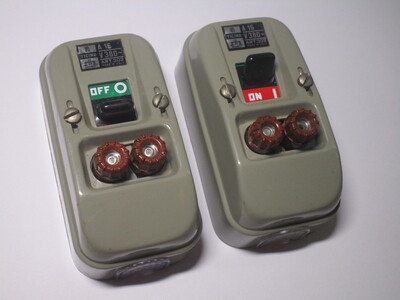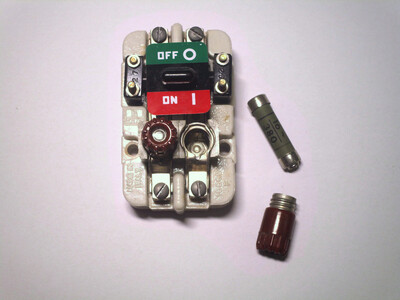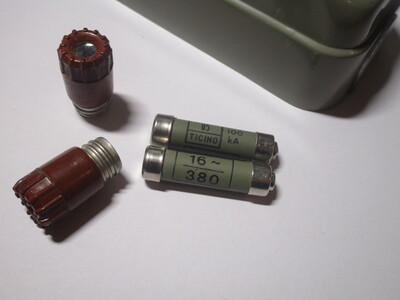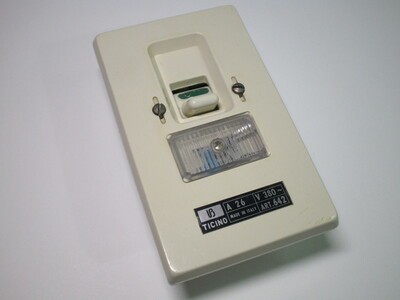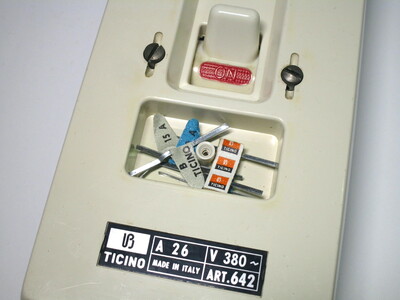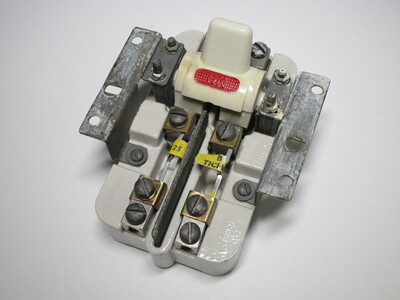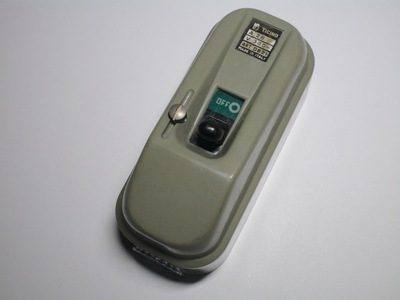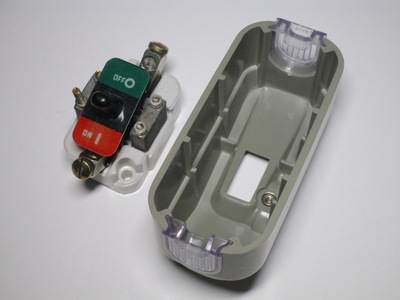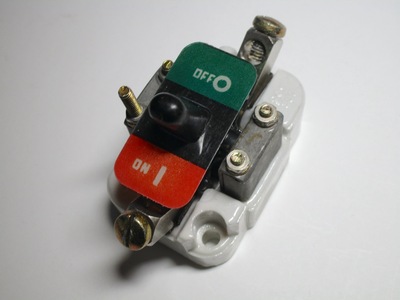Vintage Italian fuses and breakers
Back in the day, Italy didn't have a single system for fuse boxes or breaker panels, unlike for example the Wylex fuse boxes in the UK, the Edison screw fuses in North America or some of the self-contained Diazed fuseboxes found in parts of continental Europe.
Instead, separate fuse holders (and, later, breakers) were available which could then be screwed onto a board or an electrical enclosure of some sort. This was obviously more time-consuming, though it wouldn't have been as much of a problem back then as houses had very few circuits, typically only two.
Fuse holders
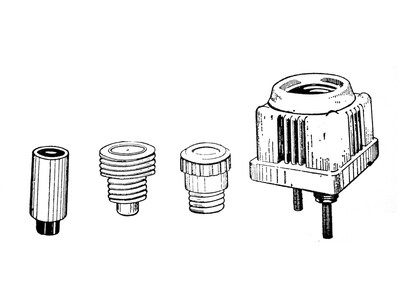 Fuse holders can vary considerably in design, but they all fall into two categories: they can be
cartridge-based, or rewireable.
Fuse holders can vary considerably in design, but they all fall into two categories: they can be
cartridge-based, or rewireable.
Their main disadvantage was that they're not resettable; of course, while this would later be solved by
breakers becoming cheaper and seeing mass adoption, their much higher complexity put them out of the price
range of most people even decades after their introduction.
Rewireable fuse holders have the advantage of being cheap - you could buy cards with fuse wire of different sizes that would last for quite a while. However, they took more skill to install (you generally needed to use a screwdriver) and there wasn't any protection against people using the wrong type of wire or something like a paperclip.
Cartridge fuses, on the other hand, only required removing the old one by unscrewing a cap and installing the new fuse. They were however more expensive (as each fuse was enclosed in ceramic). Note that in Italy the Diazed fuse system used in most other European countries was considerably less popular, and generally used more for industrial applications.
These days, you'll essentially never find an old fusebox still in place. A big part of that is due to RCDs having been made mandatory in 1990 even for existing houses; given how cheap breakers are nowadays, it made more sense to replace the entire board than try to retrofit an RCD next to old fuse holders.
Ceramic rewireable fuse holder
This was one of the earliest types of fuse holder ever used in Italy, likely due to its simplicity. It consists simply of a ceramic base (bakeilite versions also existed), with a lid that screws on top of it, with screw terminals for the wires and the fuse wire itself.
Obviously, this was quite unsafe, and it meant that it was necessary to turn the power off to replace a fuse, which was quite inconvenient.
"Tobacco tin" fuse holder
The so-called "portafusibile a tabacchiera", tobacco tin fuse holder, was one of the most popular styles of fuse holder in Italy until the 50s. They consisted of a ceramic base with metal contacts, with screws to connect the line and load wires, and a removable lid (also made of ceramic) where the fuse wire was held.
Both single and double-pole examples existed; this particular one is a double pole one, and it's in remarkably good condition. This probably means that it was never used at all, as normally used electrical items show signs of wear and tear.
Edison socket cartridge fuses
These are some early examples of cartridge fuses. The fuses themselves were built out of metal, with ceramic as an insulator. The fuse holder is made out of a single piece of ceramic and has two E27 sockets for the two fuses - that means that changing a fuse is as easy as changing a lightbulb.
The top also has the screw terminals, which, while slightly recessed, are still very easy to touch. This meant that the user would have had to pay extra attantion not to touch them and get a shock when replacing a fuse.
This style of fuse holder is somewhat similar to the American ones, and in fact one of those fits perfectly as they also use an Edison socket.
These were also used in other parts of Europe, not just Italy, but were replaced quite quickly by the much safer Diazed system, which, unlike this one, doesn't allow changing the fuse for one of a higher rating.
"Signorini" rewireable fuse holder
This is another style of fuse holder, quite similar to the "tobacco tin" one shown earlier, though this was likely newer. The main difference is that this one has two separate lids for each fuse, and the lids are held with a metal nut which screws onto a tread present on the fuse holder itself.
While the metal screw is kept separate from the fuse wire through some ceramic guides, there might be a possiblity that a melted fuse would make it live, and thus place the user in danger of receiving a shock, so this doesn't seem like a particularly great design.
25A rewireable fuse holder
This is also a rewireable fuse holder; however, it's rated at 25A. Because of this, it has much larger contacts which make the fuse carriers really hard to remove.
This specific model is in acceptable shape, though one of the screws has been replaced by a random one which sticks out of the back. Also, both fuses have been replaced by random pieces of wire, which highlights one of the main problems with rewireable fuses.
BTicino cartridge fuses
These BTicino fuse holders were very common around the 60s-70s, and were used for many applications, both in fuse boxes as well as isolator switches. They use small fuses, which are held in threaded holders which can be unscrewed to remove them.
Various different models were made over the years, varying in current rating, number of fuses (this one has two) and style of mounting (panel-mount versions were also available, for industrial use).
BTicino 642 rewireable fuse holder
The 642 fuse holders were quite common back in the day, especially as isolator switches for things like electric water heaters. They're simple rewireable fuse holders with a built-in switch; the fuse is removed by taking off the front cover, which also has a small compartment to store replacement fuses.
This model, which as also available with the cartridge fuses seen earlier, was so popular that modern-day replacements exist which enable the use of modern DIN rail breakers (an example is shown here).
Other devices
BTicino single-pole switch
Rating: 26A 380V
This is a fairly single-pole switch; it doesn't feature any sort of protection other than providing a safe way to interrupt a circuit. This could have been used, for example, for isolation of a fixed appliance such as a water heater or as the main switch of a fusebox.
Like with other devices by BTicino shown on this page, it features removable covers to feed wire or conduit through.
